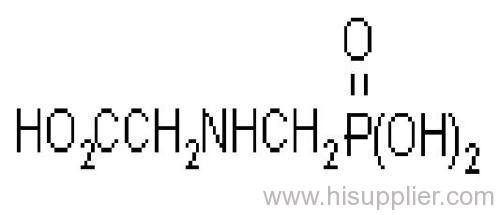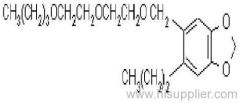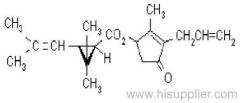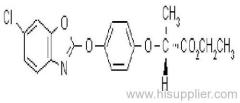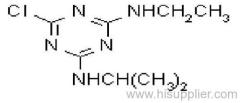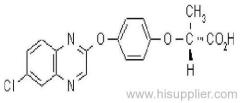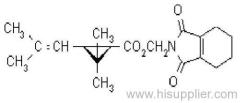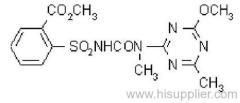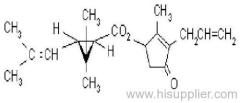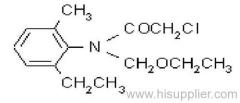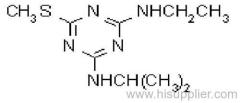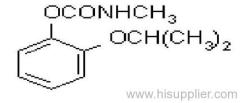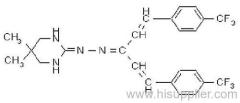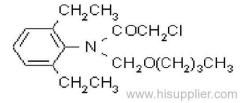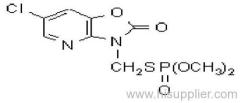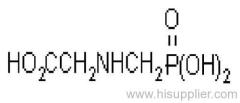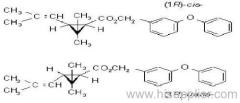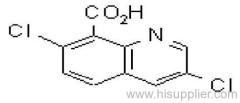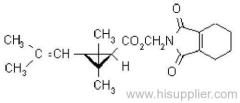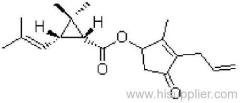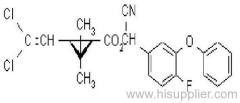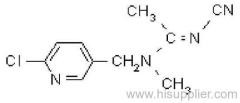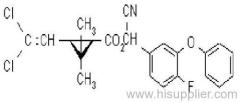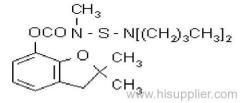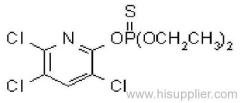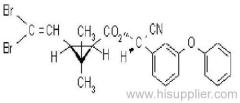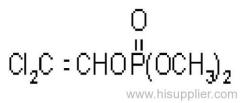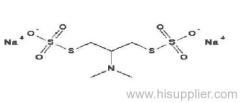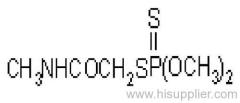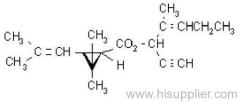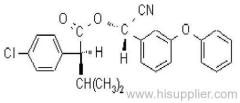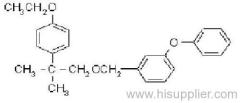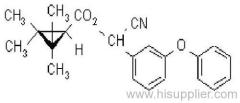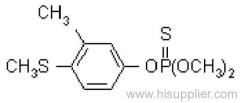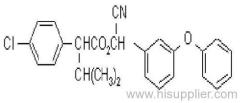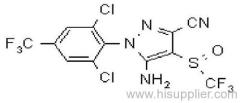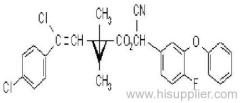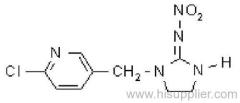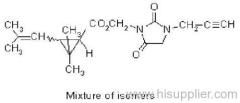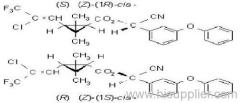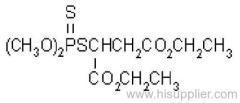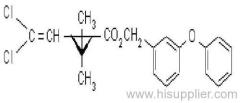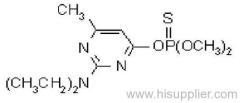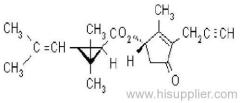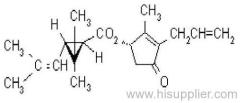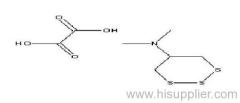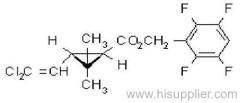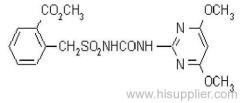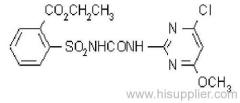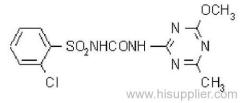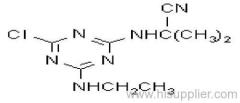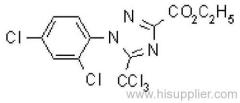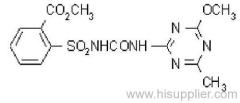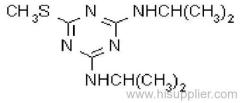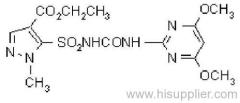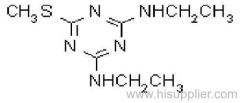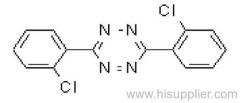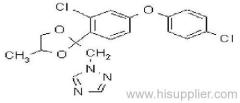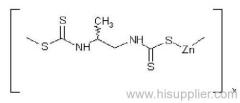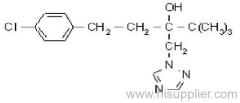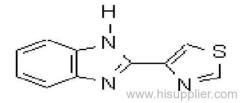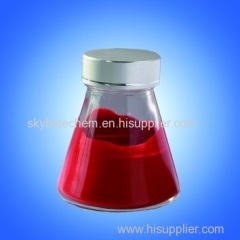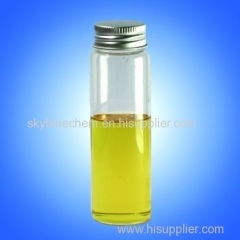
|
Shanghai Skyblue Chemical Co., Ltd.
|
Glyphosate
| Place of Origin: | Shanghai, China (Mainland) |
|
|
|
| Add to My Favorites | |
| HiSupplier Escrow |
Product Detail
Non-selective systemic herbicide, absorbed by the foliage, with rapid translocation throughout the plant. Inactivated on contact with soil.
glyphosate
Common name: glyphosate
IUPAC name: N-(phosphonomethyl)glycine
Chemical Abstracts name: N-(phosphonomethyl)glycine
CAS RN: [1071-83-6]
glyphosate-ammonium
CAS RN: [40465-66-5] monoammonium salt; [69254-40-6] diammonium salt; [114370-14-8] unspecified ammonium salt
glyphosate-isopropylammonium
CAS RN: [38641-94-0]
glyphosate-sodium
CAS RN: [34494-03-6]
glyphosate-trimesium
IUPAC name: trimethylsulfonium N-(phosphonomethyl)glycinate
Chemical Abstracts name: N-(phosphonomethyl)glycine trimethylsulfonium salt
Other names: sulfosate
CAS RN: [81591-81-3]
PHYSICAL CHEMISTRY
glyphosate
Composition: Tech. is 95% pure. Zwitterion structure. Mol. wt.: 169.1; M.f.: C3H8NO5P; Form: Colourless crystals. M.p.: 189.5 °C; B.p.: Decomp. >200 °C. V.p.: 1.31x10-2 mPa (25 °C). KOW: logP <-3.2 (pH 2-5, 20 °C), (OECD 107; EEC A8). Henry: <2.1x10-7 Pa m3 mol-1 S.g./density: 1.705 (20 °C). Solubility: In water 11.6 g/l (25 ºC). Insoluble in common organic solvents, e.g. acetone, ethanol and xylene. The alkali-metal and amine salts are readily soluble in water. Stability: Glyphosate and all its salts are non-volatile, do not photochemically degrade and are stable in air. Glyphosate is stable to hydrolysis at pH 3, 6 and 9 (5-35 °C). F.p.: Not flammable.
glyphosate-ammonium
Composition: Tech. is 95% pure. Mol. wt.: 186.1; M.f.: C3H11N2O5P; Form: Odourless, white powder. M.p.: Decomp. >190 °C, without melting. V.p.: 9x10-3 mPa (25 °C). KOW: logP <-3.7; Henry: 1.16x10-8 Pa m3 mol-1 (calc.) S.g./density: 1.433 (22 °C). Solubility: In water 144?9 g/l (pH 3.2). Essentially insoluble in organic solvents. Stability: Stable over 5 days at 50 °C (pH 4, 7 and 9). F.p.: Not flammable.
glyphosate-isopropylammonium
Composition: As a wet cake, contains c. 62% w/w isopropylamine salt, c. 35% water. Mol. wt.: 228.2; M.f.: C6H17N2O5P; Form: Odourless, white powder. M.p.: Occurs in 2 steps, 143-164 °C and 189-223 °C. B.p.: Decomposes without boiling. V.p.: 2.1x10-3 mPa (25 °C). KOW: logP = -5.4; Henry: 4.6x10-10 Pa m3 mol-1 (25 °C, calc.) S.g./density: 1.482 (20 °C). Solubility: In water 1050 g/l (25 °C, pH 4.3). In dichloromethane 0.184, methanol 15.88 (both in g/l, 20 °C).
glyphosate-sodium
Mol. wt.: 191.1; M.f.: C3H7NNaO5P; Form: Odourless, white powder. M.p.: Decomp. >260 °C. V.p.: 7.56x10-3 mPa (25 °C). Henry: 4.27x10-9 Pa m3 mol-1 (calc.) S.g./density: 1.622 (20 °C). Stability: Stable over 5 days at 50 °C (pH 4, 7 and 9).
glyphosate-trimesium
Mol. wt.: 245.2; M.f.: C6H16NO5PS; Form: White solid. M.p.: Decomp. 150 °C. V.p.: <0.01 mPa (20 ºC). KOW: logP = -2.9; Henry: <2x10-9 Pa m3 mol-1 (calc.) S.g./density: 1.42; Solubility: In water >1000 g/l. In acetone, chlorobenzene, ethanol, kerosene, xylene <5 (all in g tech./l).
APPLICATIONS
Biochemistry: Inhibits 5-enolpyruvylshikimate-3-phosphate synthase (EPSPS), an enzyme of the aromatic acid biosynthetic pathway. This prevents synthesis of essential aromatic amino acids needed for protein biosynthesis.
Mode of action: Non-selective systemic herbicide, absorbed by the foliage, with rapid translocation throughout the plant. Inactivated on contact with soil.
Uses: Control of annual and perennial grasses and broad-leaved weeds, pre-harvest, post-planting/pre-emergence and in stubble, in cereals, peas, beans, oilseed rape, flax and mustard, at c. 1.5-2 kg/ha; as a directed spray in vines and olives, at c. 4.3 kg/ha; in orchards, pasture, forestry and industrial weed control, at c. 4.3 kg/ha. As an aquatic herbicide, at c. 2 kg/ha.
Formulation types: SG; SL.
Compatibility: Mixing with other herbicides may reduce the activity of glyphosate.
MAMMALIAN TOXICOLOGY
glyphosate
Oral: Acute oral LD50 for rats 5600, mice 11 300, goats 3530 mg/kg.
Skin and eye: Acute percutaneous LD50 for rabbits >5000 mg/kg. Eye irritant; non-irritating to skin (rabbits).
Inhalation: LC50 (4 h) for rats >4.98 mg/l air.
NOEL: In 2 y feeding trials, no ill-effects were observed in rats receiving 410 mg/kg diet daily (average) and, in 1 y feeding trials, no ill-effects were observed in dogs receiving 500 mg/kg daily (highest dose treated).
ADI: 0.3 mg/kg b.w.
Water GV: Unnecessary to recommend a guideline value because not hazardous to health at concentrations normally found in drinking water.
Other: Not mutagenic, not carcinogenic, not teratogenic, not neurotoxic. No adverse effects on reproduction.
Toxicity class: WHO (a.i.) III (Table 5); EPA (formulation) III
EC hazard: (Xi; R41)
glyphosate-ammonium
Oral: Acute oral LD50 for rats 4613 mg/kg.
Skin and eye: Acute percutaneous LD50 for rabbits >5000 mg/kg. Slight eye irritant; not a skin irritant (rabbits).
Inhalation: LC50 >1.9 mg/l air.
Toxicity class: EPA (formulation) III
glyphosate-isopropylammonium
Oral: Acute oral LD50 for rats >5000, goats 5700 mg/kg.
Skin and eye: Acute percutaneous LD50 for rabbits >5000 mg/kg. Slight eye irritant; not a skin irritant (rabbits).
Inhalation: LC50 (4 h) for rats >1.3 mg/l air.
NOEL: In a 6 mo capsule trial, no ill-effects were observed in dogs receiving 300 mg/kg daily (highest dose treated).
Toxicity class: EPA (formulation) III
glyphosate-sodium
Skin and eye: Acute oral LD50 for rats >5000 mg/kg. Slight eye irritant; not a skin irritant (rabbits).
glyphosate-trimesium
Oral: Acute oral LD50 for male rats 748, female rats 755, mice 1250 mg/kg.
Skin and eye: Acute percutaneous LD50 for rabbits >2000 mg/kg.
Inhalation: LC50 (4 h) for rats 6.2 mg/l air.
NOEL: 100 mg/kg daily. No teratogenic effect observed.
ADI: 25 mg/kg b.w.
EC hazard: (Xn; R22)
ECOTOXICOLOGY
glyphosate
Birds: Acute oral LD50 for bobwhite quail >3851 mg/kg. Dietary LC50 (8 d) for quail and ducks >4640 mg/kg diet.
Fish: LC50 (96 h) for trout 86, bluegill sunfish 120, harlequin fish 168, sheepshead minnow >1000 mg/l.
Daphnia: LC50 (48 h) 780 mg/l.
Algae: EC50 (72 h) for Selenastrum capricornutum 485 mg/l, (7 d) 13.8 mg/l; (96 h) for Skeletonema costatum 1.2 mg/l, (7 d) 0.64 mg/l; (7 d) for Navicula pelliculosa 42, Anabaena flos-aquae 15 mg/l.
Other aquatic spp.: LC50 (96 h) for mysid shrimp (Mysidopsis bahia) >1000, grass shrimp 281, fiddler crab 934 mg/l. EC50 (96 h) for sea urchin >1000 mg/l; (14 d) for Lemna gibba 25.5 mg/l. EC50 (48 h) for Litoria moorei tadpole 111 mg/l.
Bees: LD50 (contact and oral ) >100 ug/bee.
glyphosate-isopropylammonium
Fish: LC50 (96 h) for trout and bluegill sunfish >1000, fathead minnow 97, channel catfish 130 mg/l.
Daphnia: LC50 (48 h) 930 mg/l.
Algae: EC50 (72 h) for Scenedesmus subspicatus 72.9 mg/l.
Other aquatic spp.: EC50 (48 h) for midge larvae 5600, Litoria moorei tadpole >343 mg/l.
Worms: LC50 (14 d) for Eisenia foetida >5000 mg/kg soil.
Other beneficial spp.: No effects on carabid beetle; harmless to slightly harmful to green lacewing, parasite species, mites/spiders and insects, except moderately harmful to Bembidion lampros.
glyphosate-trimesium
Birds: Acute oral LD50 for bobwhite quail >2050, mallard ducks 950 mg tech./kg.
Fish: LC50 (96 h) for trout 1800, bluegill sunfish >3500 mg/l.
Daphnia: LC50 (48 h) 12 mg/l.
Algae: EC50 19 mg/l.
Bees: LD50 (contact) 0.39 mg/bee; (oral) >0.4 mg/bee.
Worms: LD50 (14 d) >1000 mg/kg soil.
Other beneficial spp.: Harmless under field conditions at field application rates to parasitic wasps (Aphidius rhopalosiphi), lycosid spiders and carabid beetles (Pterostichus melanarius).
ENVIRONMENTAL FATE
Animals: In mammals, following oral administration, glyphosate is very rapidly excreted unchanged and does not bioaccumulate.
Plants: Slowly metabolised to aminomethylphosphonic acid ([1066-51-9]), which is the major plant metabolite.
Soil/Environment: In soil (field), DT50 3-174 d, depending on edaphic and climatic conditions. In water, DT50 varies from a few to 91 d. Photodegradation in water occurs under natural conditions, DT50<=28 d; no substantial photodegradation in soil was recorded over 31 d. In a lab. whole system with water and sediment, DT50<=14 d (aerobic), 14-22 d (anaerobic). The major metabolite in soil and water is aminomethylphosphonic acid.

